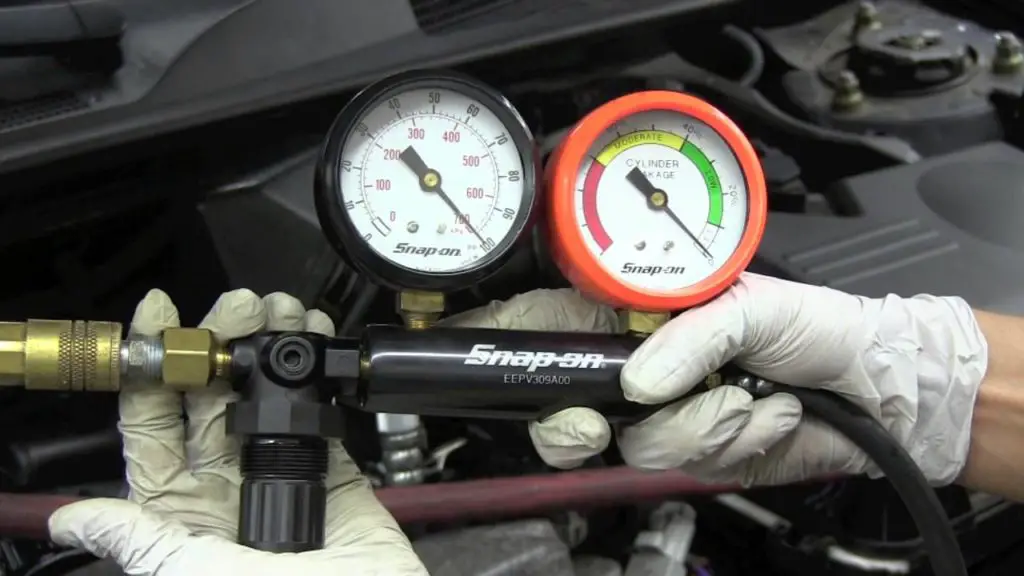If you’re the owner of a 2013 Harley-Davidson Dyna and are experiencing some performance issues, one possible cause may be a cylinder leak. Luckily, this problem is easy to diagnose with a leak-down test. This article will show you how to do a leak-down test on your Harley-Davidson Dyna model.

In case of an auto compression release, check whether the ACRs are closed for this procedure. The test should be performed with the ignition/light switch in the OFF position.
The cylinder leak down test will show if leaking valves, damaged or stuck piston rings, and blown head gaskets are present. The cylinder leakage tester uses compressed air to pressurize and discharge the cylinder at a specific pressure and volume. It subsequently calculates the proportion of leakage from the cylinder.
This test is critical to maintaining your Harley-Davidson Dyna in optimal condition. Regularly checking for cylinder leakage can avoid bigger and more expensive problems down the road.
Quick Article Navigation
Harley-Davidson Dyna Cylinder Leakdown Test
First, you’ll need to warm up the engine until it reaches normal operating temperature. Then stop the engine and remove the spark plugs. Next, rotate the crankshaft until the piston in the tested cylinder is at the top dead center of the compression stroke. To keep the engine from turning over when air pressure is applied to the cylinder, engage transmission in first or second gear, or use suitable engine support.
Now you’re ready to begin the test. Firstly, open the bleed valve to relieve any pressure in the tester. Secondly, insert the tester’s probe into the spark plug hole and hand-tighten the adapter.
Be careful not to cross-thread it. Now attach the rubber hose from the tester to the adapter, and open the valve slowly until you hear air escaping from the cylinder. If there’s no leakage, you’ll hear a hissing sound. If there is leakage, you’ll hear a clicking sound.
Once you’ve determined there is leakage, proceed to the next step. With the engine still in first or second gear, slowly pressurize the cylinder until the pressure gauge reading stabilizes. At this point, note the percentage of pressure being lost and compare it to the chart below.
0-15% = Good condition
16-25% = Minor leakage; may not need attention
26-35% = Moderate leakage; will need attention
36-50% = Severe leakage; needs immediate repair
If you find that your cylinder has a moderate or severe leak, it’s time to take it to a qualified mechanic for repair. Cylinder leaks can cause a decrease in performance and fuel efficiency, so it’s important to take care of the problem as soon as possible.
Frequently Asked Questions
What causes a cylinder to leak?
A leak-down test can determine if the loss of compression is due to worn rings, burned or sticking open valves (intake or exhaust), or a leaking head gasket. The beauty of a leak-down test is that it allows you to examine just a few cylinders or all of them at once.
How often should I do a cylinder leak-down test?
Cylinder leak-down tests are critical to maintaining your Harley-Davidson Dyna in optimal condition. We recommend doing them every year or as needed.
What are the consequences of not fixing a cylinder leak?
Cylinder leaks can cause a decrease in performance and fuel efficiency. If left untreated, they can also cause engine damage.
Can I do the cylinder leak down test myself?
Yes, you can. However, if you’re not familiar with engines, it’s best to take it to a qualified mechanic.
Final Words
A cylinder leak-down test is a quick and easy way to check the condition of your engine. Regularly checking for cylinder leakage can avoid bigger and more expensive problems down the road. If you find that your cylinder has a moderate or severe leak, take it to a qualified mechanic for repair as soon as possible. Thanks for reading!
